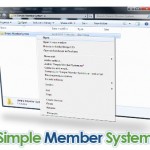 It is rare to find someone that you can trust these days when it comes to the latest Internet Marketing product out there but without a doubt Jimmy D Brown is the person who I have invested in time and time again to help me with my online ventures and today’s post is an article he has written that I believe can get you started building an online business today. I hope you enjoy this article on “How to Start a Successful Internet Business in 7 Steps!”
It is rare to find someone that you can trust these days when it comes to the latest Internet Marketing product out there but without a doubt Jimmy D Brown is the person who I have invested in time and time again to help me with my online ventures and today’s post is an article he has written that I believe can get you started building an online business today. I hope you enjoy this article on “How to Start a Successful Internet Business in 7 Steps!”
It’s exciting to think about how much money you can make online.
But if you’re new to online marketing, it can also be overwhelming
to try to figure out which business model is right for you.
The solution? Keep it simple.
Just follow these seven surefire steps to online profits…
Step 1: Choose a Market
But don’t just choose any market – instead, choose a HUNGRY market.
That means you’re looking for a market that is actively seeking
paid solutions to their problems.
Here’s how:
o Search marketplaces like Amazon.com and Clickbank.com to see what
types of niches attract eager, proven buyers.
o Use a keyword tool like WordTracker.com or the free Google
Keyword Tool to find out what people are searching for. You can
enter your proposed niche keywords (like “dog training”) to see if
there is a demand, or enter a broad keyword (like “secrets” or “how
to”) to uncover new niches.
o Go to EzineArticles.com and browse the top articles to see which
niches are popular.
Step 2: Get Your Tools In Place
Once you find a niche that spends money, your next step is to
gather your tools. These include:
o A domain name, which you can get at NameCheap.com.
o Hosting, which you can secure at HostGator.com.
o An autoresponder, which you can purchase through Aweber.com.
Step 3: Select an Offer to Promote
Next, you need to find an affiliate offer that you can promote to
your hungry niche. The best way to do that is to find out what
they’re already buying… and choose a similar offer.
Simply go to Clickbank.com and browse the relevant niche category.
Those products appearing at the top of the catalog are your best
sellers – you should choose a product near the top of the list.
Just be sure to buy, read and use the product to ensure that it is,
indeed, a good product.
Step 4: Write and Upload a Mini eCourse
Your next step is to create an autoresponder series around the
topic of your product so that you can promote your offer. Your
autoresponder series should be at least 7-12 messages long.
For example:
You’re selling a copywriting product. You can create a seven-part
ecourse on how to write a sales letter. Then promote the
copywriting product in every message.
You’re selling a diet recipe book. You can create a 10-part weight
loss course that pitches the recipe book in every message.
You’re selling a dog training video. You can create a seven part
course that teaches the basic obedience lessons such as sit, down
and stay. In every message you refer your prospects to the paid
video for more information.
Here’s the key: Do NOT solve your prospect’s problems 100%. You
want to provide useful but incomplete information, so that your
prospects need to purchase your affiliate offer in order to fully
solve their problems.
Step 5: Create a Squeeze page
Next, you need to persuade your prospects to subscribe to your
ecourse. You do this by creating a mini sales page (AKA squeeze
page). This page should include:
o A headline that touts your course’s major benefit (e.g., “FREE:
How to housetrain your puppy in just three easy steps!”).
o A list of the other benefits of your course (e.g., “You’ll
discover the secrets of turning an unruly, rambunctious puppy into
a perfect houseguest!”).
o And a call to action (e.g., “Just enter your name and email
address in the form below now, click join and you’ll get instant
access to this eye-opening report!”).
You may also provide proof of your claims, such as testimonials,
videos, screenshots, pictures and similar evidence.
Step 6: Drive Traffic to the Squeeze Page
Next, you need to drive targeted traffic to your squeeze page so
that you can quickly build your list. You can do this by:
o Starting a blog and posting articles that are optimized for the
search engines.
o Trading links with other high traffic sites in your niche.
o Being a guest blogger on other peoples’ blogs.
o Co-promoting with other marketers in your niche (e.g., endorsing
each other in your newsletters).
o Submitting articles to EzineArticles.com and other article
directories.
o Using social media sites like Squidoo.com, Yahoo! Answers, and
Facebook.com.
o Participating on niche forums on in niche blog discussions.
Step 7: Add Messages to Your Autoresponder Series
Once you’re getting traffic, building your list and making a
profit, you can start adding even more messages to your
autoresponder – anywhere from a couple month’s worth of messages to
a year or more.
That way you’ll make money virtually on autopilot – all you have to
do is build your list and let your autoresponder do all the work!
Summary
Making money online doesn’t have to be complicated, not when you
follow these seven easy steps!
—————–
Jimmy D. Brown is the publisher of IMvestments: How To IMvest in Internet Marketing for a Great ROI, a comprehensive course teaching 7 ways to buy internet marketing related assets and quickly realize significant profitable yields from them. Details at http://imstitute.com/go.php?offer=texasdmcg&pid=30

